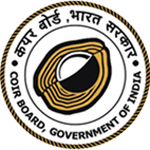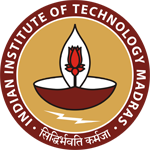With the growing environmental concerns over the exorbitant use of non-biodegradable polymers, increasing attention has been paid towards their potential replacement with natural fibres. Natural plant fibres may be extracted from different parts of the plant such as stem (flax, kenaf), leaf (pineapple, sisal), seed (cotton, coir), etc. India has a rich heritage in textile and fibre industry and the country is a leading producer of cotton, jute and coir fibres. Also, we have significant production capacities of fibres such as sisal, kenaf, pineapple, roselle, banana, etc., which are having significant industrial applications apart from the textile field. The figure depicts the geographic location of plant cultivations in India, with commercial fibres as the primary or secondary product.

Among the broad spectrum of natural fibres, the coir fibre stands out with some peculiar character traits. The fibre is the toughest in its category. Also, coir fibre is having the highest lignin content, making it the most durable among the group. These properties are signified in an evolutionary standpoint due to multiple reasons. Since the coconut must endure high fall, fibrous husk has been naturally engineered to absorb the impact upon landing. Also, the heavy nuts that are largely being relocated floating in water bodies need sufficient durability to survive before landing on the shore and sprouting. However, the coir fibre strength is less when compared to bast fibres such as jute or sisal, as the later have higher percentage of crystalline cellulose to provide structural rigidity and strength to the plant body.
Our familiarity and acquaintance with coir fibre dates back to several millennia and India has been a key player in the market ever since the industrial production of coir started in the mid-19 th century. Occupying the lion-share in the global export of coir-products, the coir industry in India supports nearly one million people with a dominant female representation, and the majority belonging to the economically disadvantageous group. Hence any aligned research to promote the coir industry can bring evident and immediate social impact. From the infant stages of the industry, significant fraction of the production and manufacturing has been focused mainly in Kerala. However, recent times witnessed increased participation from states such as Tamil Nadu, Karnataka, Andra Pradesh, Telengana and Orissa in the material production. Diversified products can be made from coir fibre, the main categories being the mats and geotextiles. The scope of the industrial application of coir products got escalated several folds with the introduction of coir geotextiles. The material been deployed for variety of applications such as erosion control, pavement stabilization etc. The figures provided below shows the different grades of coir geotextiles available in the market. Apart from this, the potential of the material in cushioning and acoustic applications as well as additive in cement and polymer composites are being actively researched.
Owing to its expanding regime of applications, more fundamental understanding of the material is required in areas such as the fibre durability and degradation aspects, the fire retardancy of the materials, the suitability as natural reinforcement in composites, enhancement and refinement in the manufacturing technology, field performance analysis etc. In this regard the centre of excellence established at IIT Madras is looking forward to offering the research and technology assistance to the coir-board, in view of enhancing the value addition to the material.

